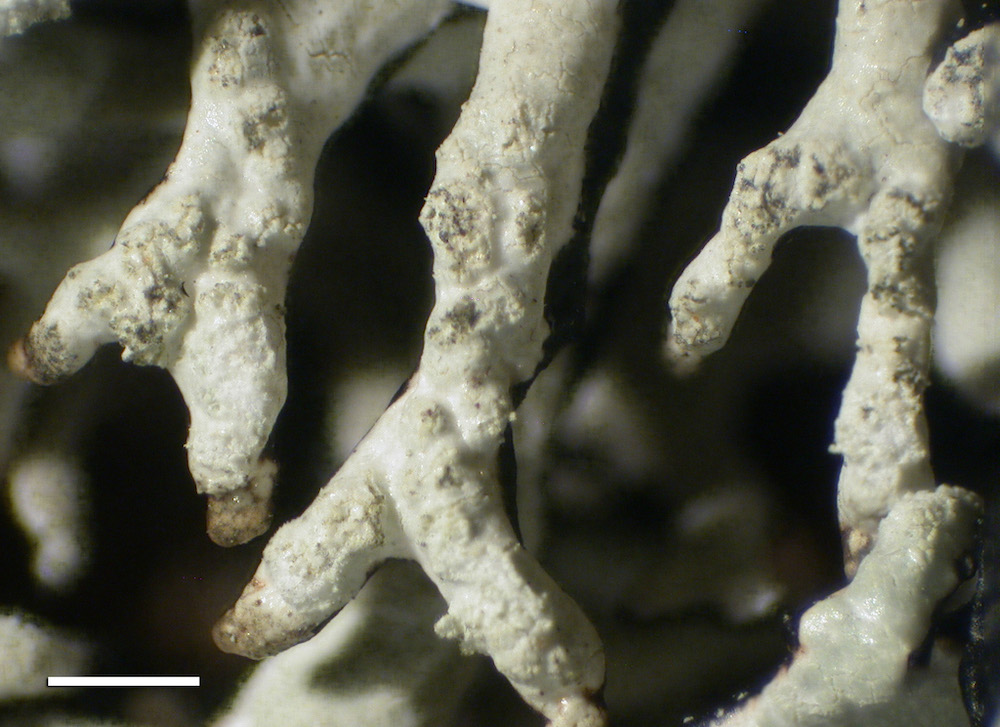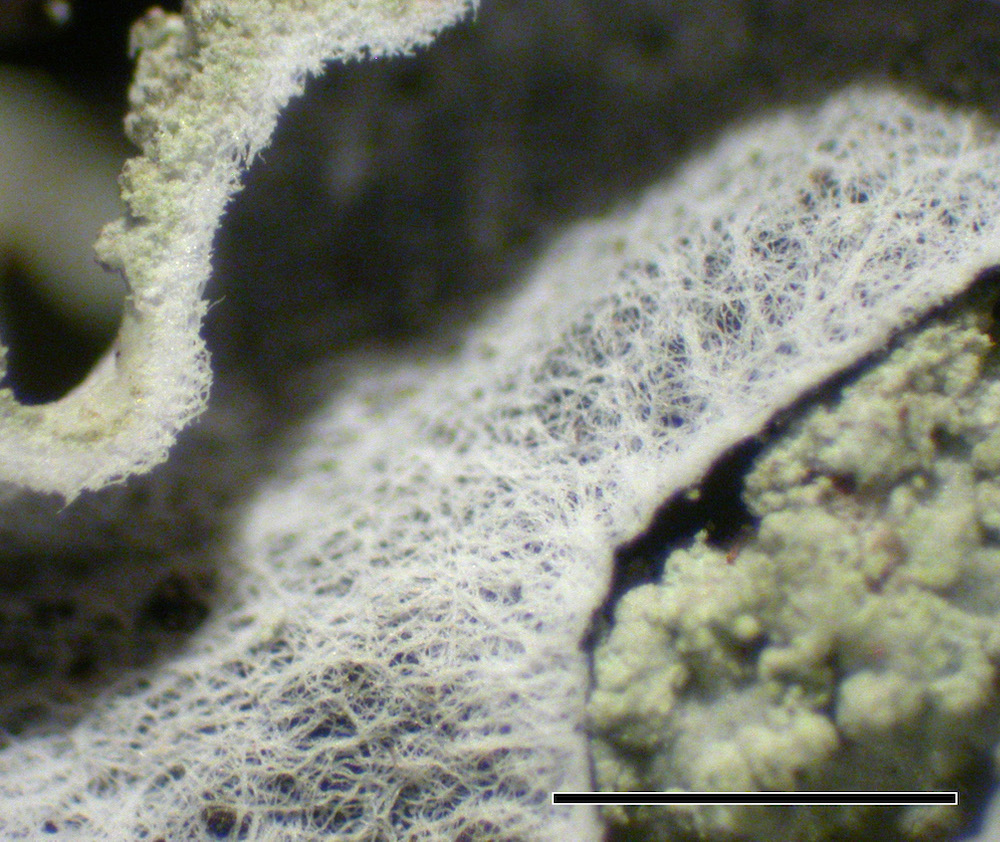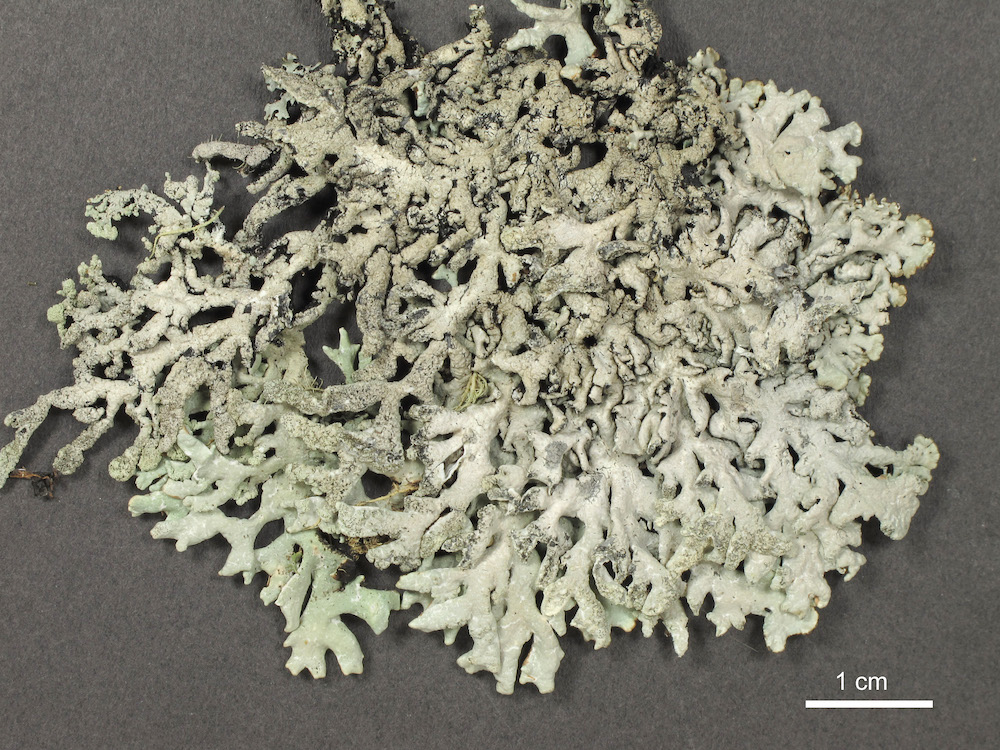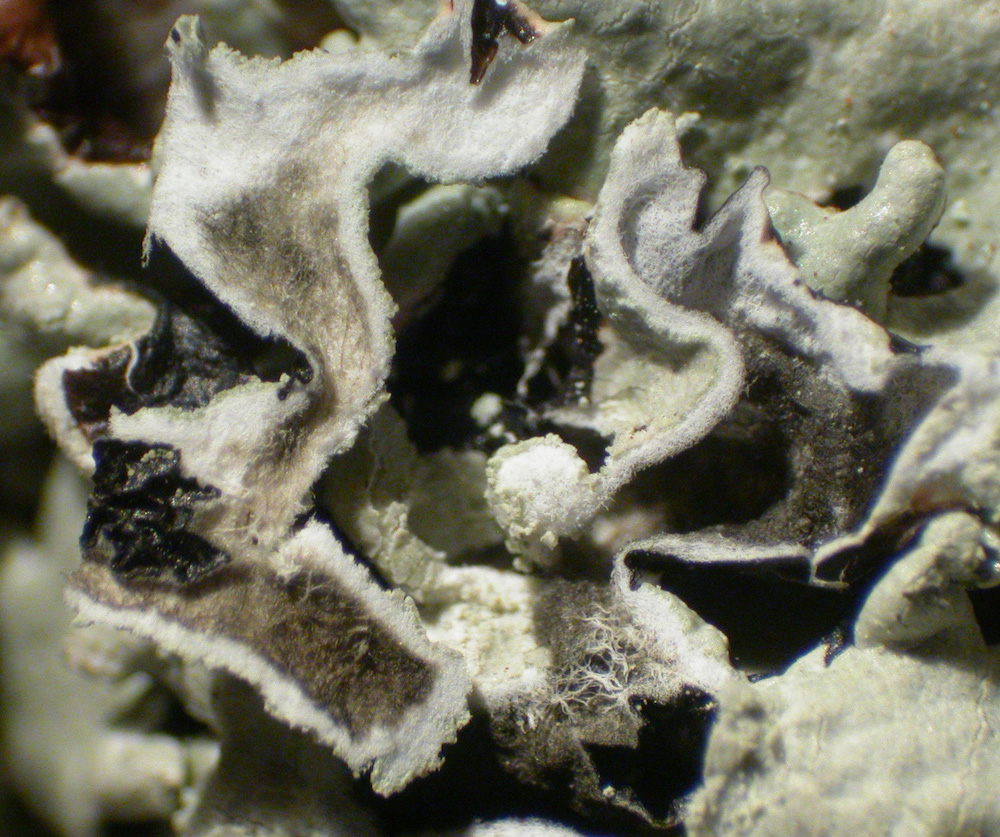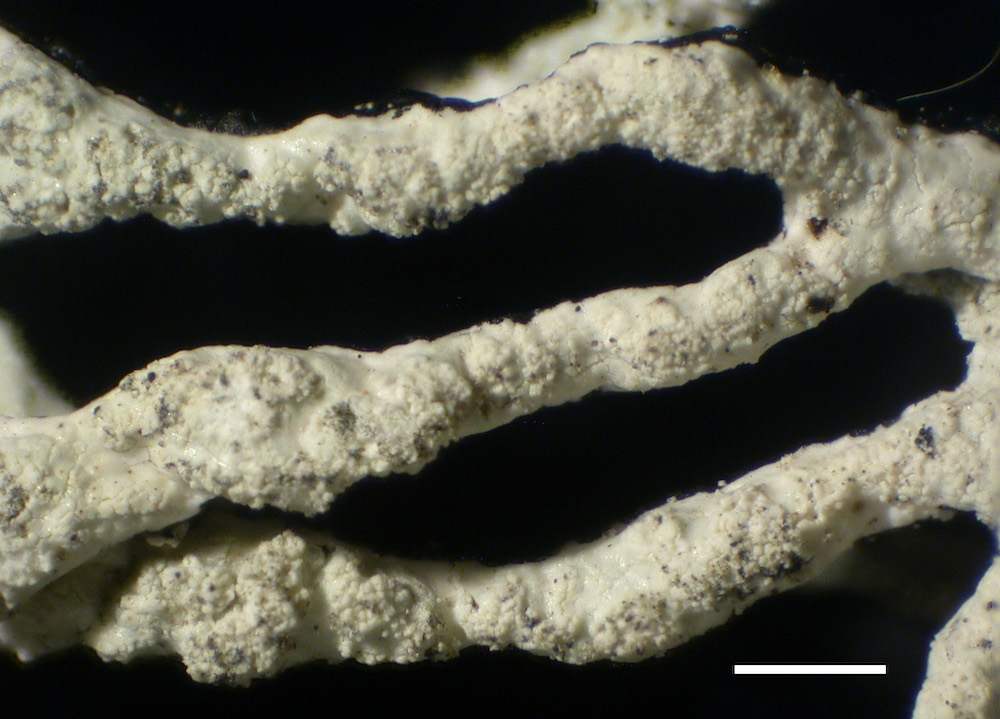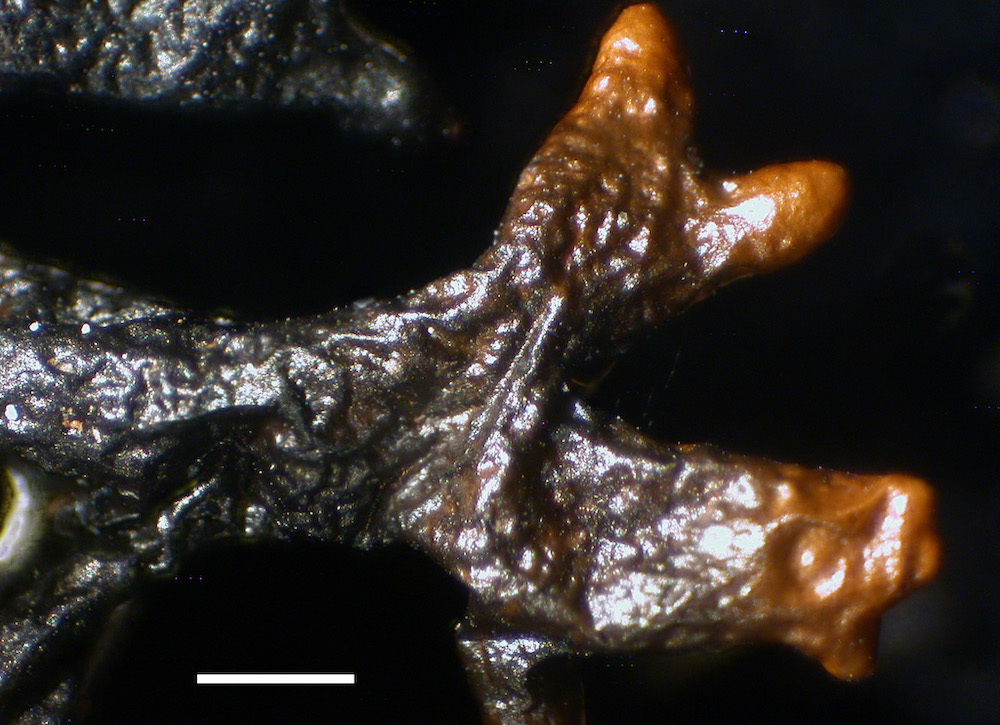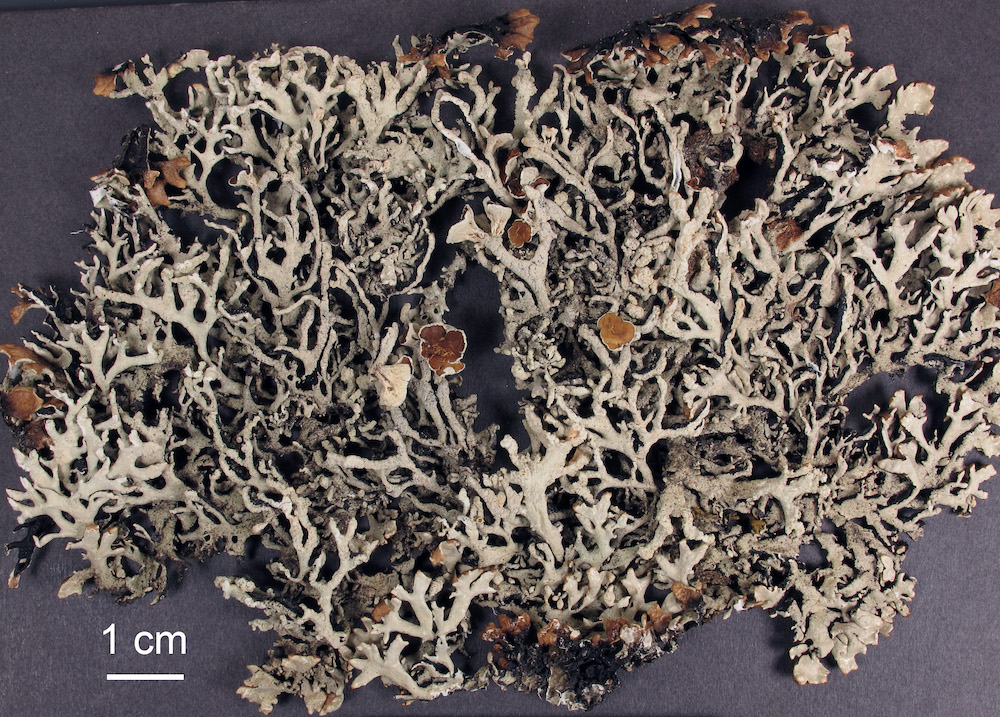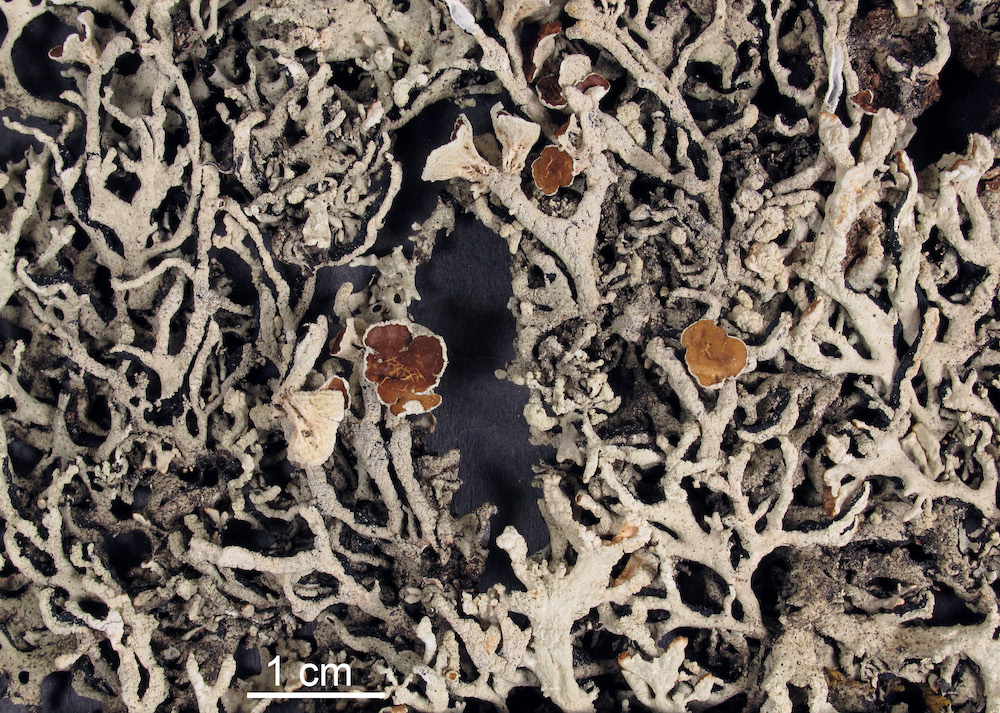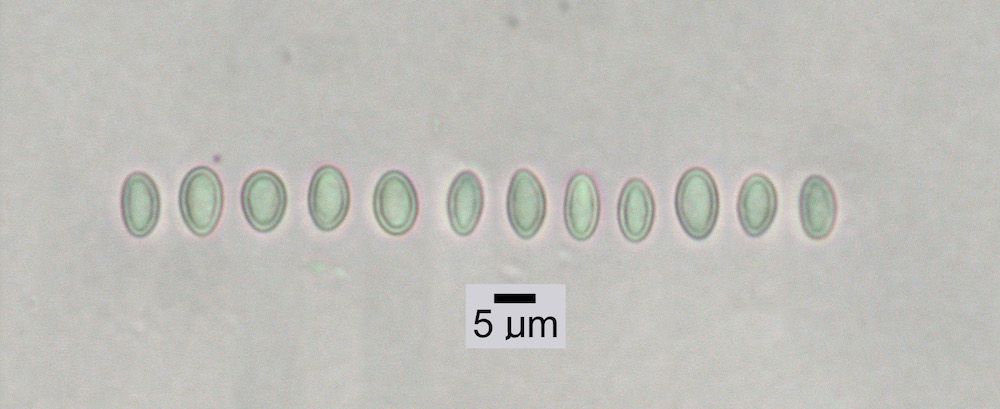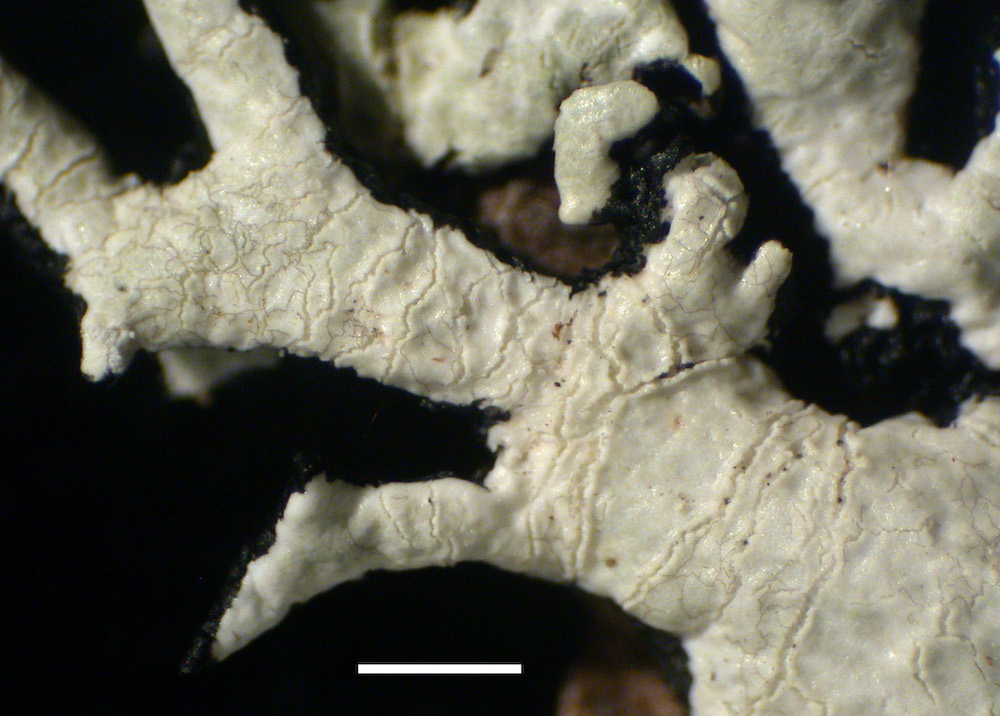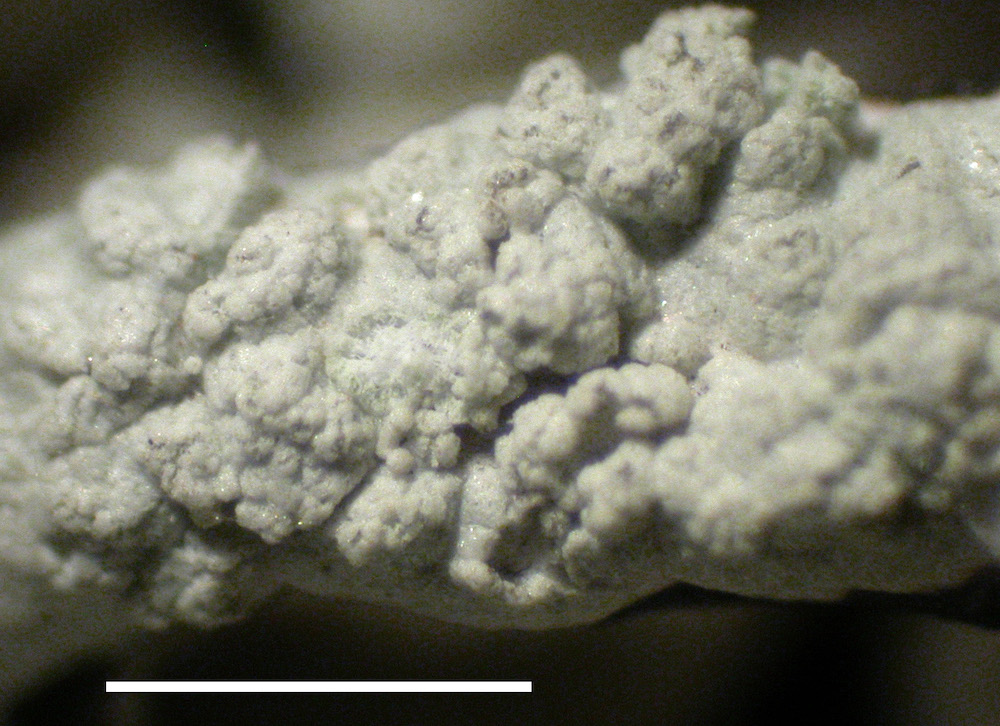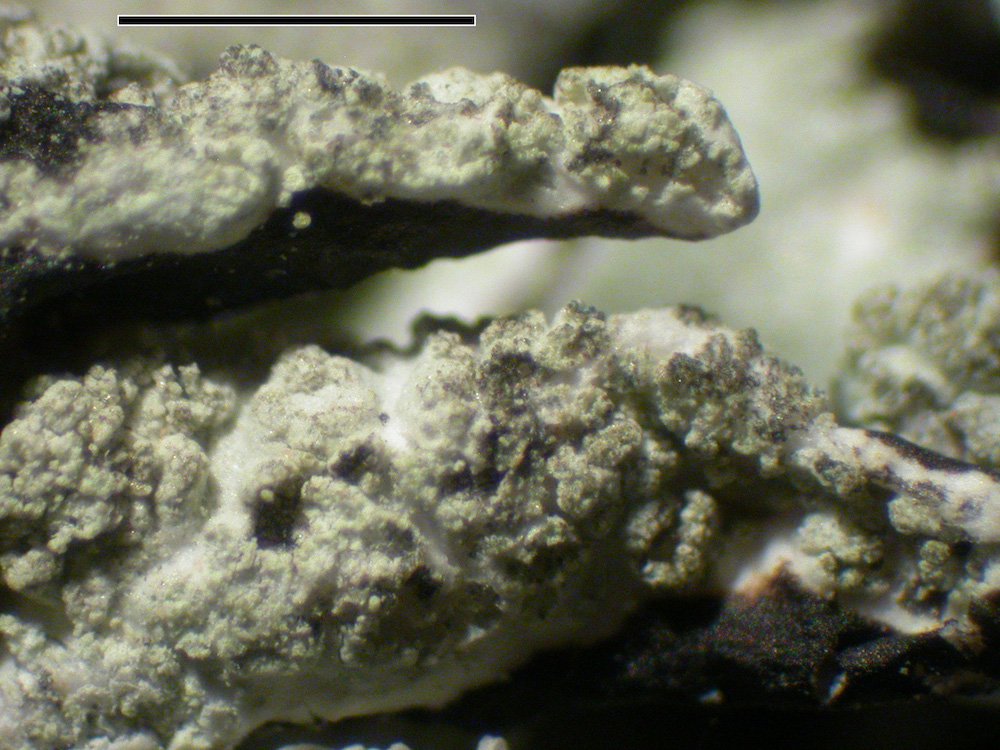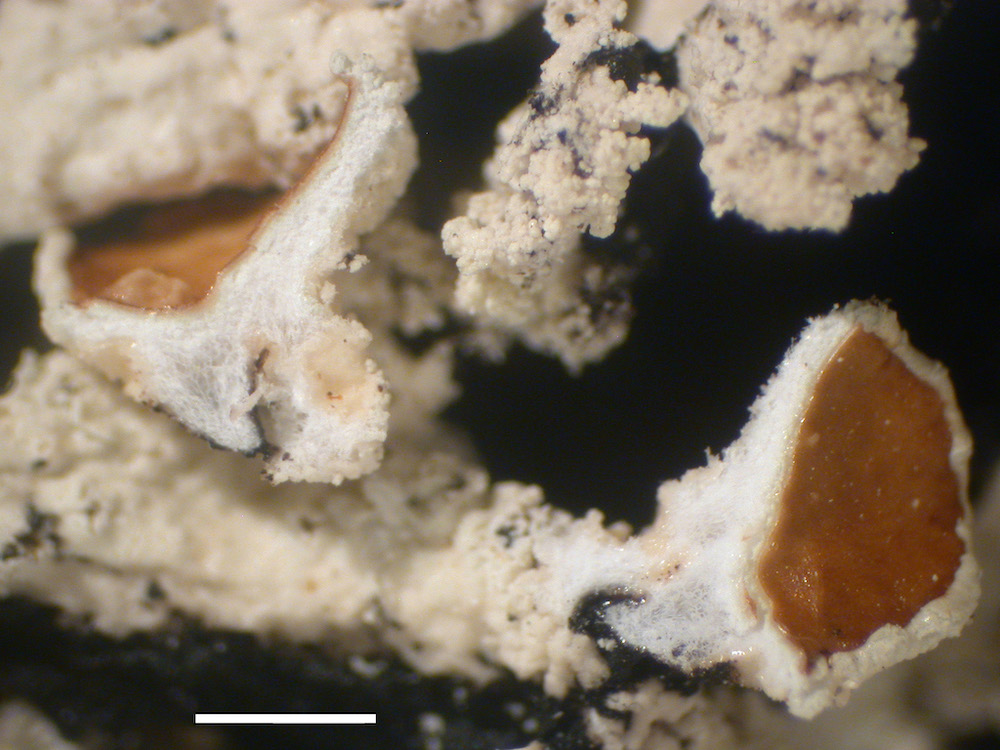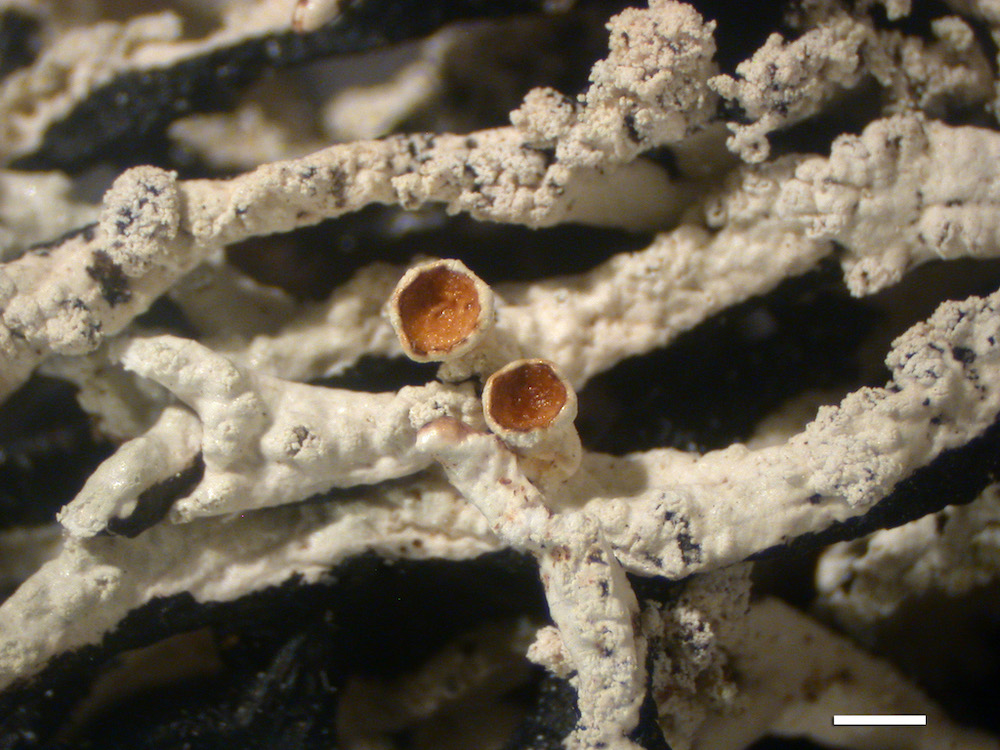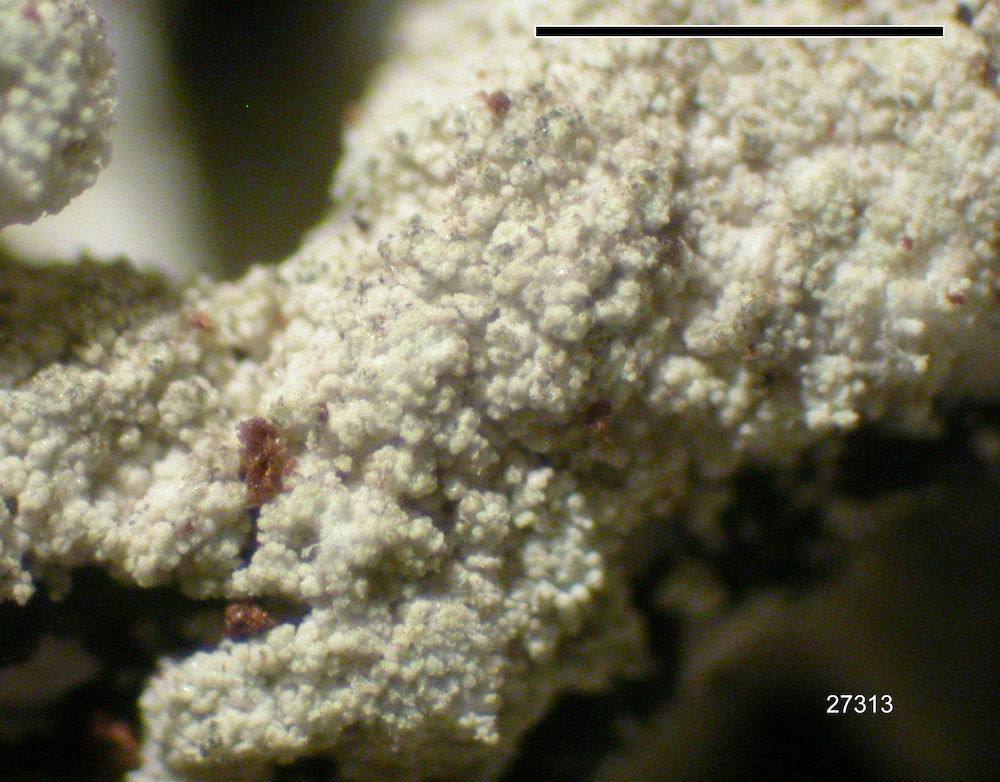Click on Characteristic name for explanation. Click on image for larger version.
Overview
| Synopsis:
| Laminal soredia on lobes with completely white lobe cavity, lobes appressed to suberect, continguous or separate; medulla P- or P+ orange red.
|
| Distribution:
| Australia: many provinces, common in S. Am. and N.Z. (Fl. Aust.). Argentina (Calvelo & Liberatore 2002). New Zealand: North Island, Auckland, South Auckland, Taranaki, Wellington; South Island: Westland, Marlborough, Canterbury, Otago, Southland (Galloway 2007). Var. austerodioides was reported by Galloway (2007) from many sites on both N and S Islands of New Zealand. Tasmania (Kantvilas et al. 2002).
|
| Habitat:
| humid temperate forests
|
| Range:
| Pacific Northwest Immediate Coast
|
| Other Diagnostics: | Flaky laminal soredia with white cavities.. "...corticolous habit; the presence of soredia; and the hollow, narrow (1.5 mm wide or less), elongated marginal and submarginal lobes" (Galloway 2007). "...hollow, rather fragile, loosely attached, +/- terete, discrete, elongate and deeply deivided lobes with sparse to dense soredia" (Kantvilas et al. 2002). Var. subphysodes is "readily distinguished from variety austerodioides which has contiguous marginal lobes and occurs mainly in dry sclerophyll forest." (Kantvilas et al. 2002). See that ref for more comparison between varieties.
| | Substrate Notes: | On bark (both hardwoods and conifers), dead wood,twigs, rocks
| | Abundance in North America: | Present
| | Substrate: | Typically
| | Host: | Eucalyptus, Nothofagus
| | On Rock: | Rarely
| | On Moss/Detritus/Sod: | Never
| | Authority: | (Kremp.) Filson
| | References: | Elix (1992), Galloway (2007), Kantvilas et al. (2002)
| | Synonymy: | None
|
|
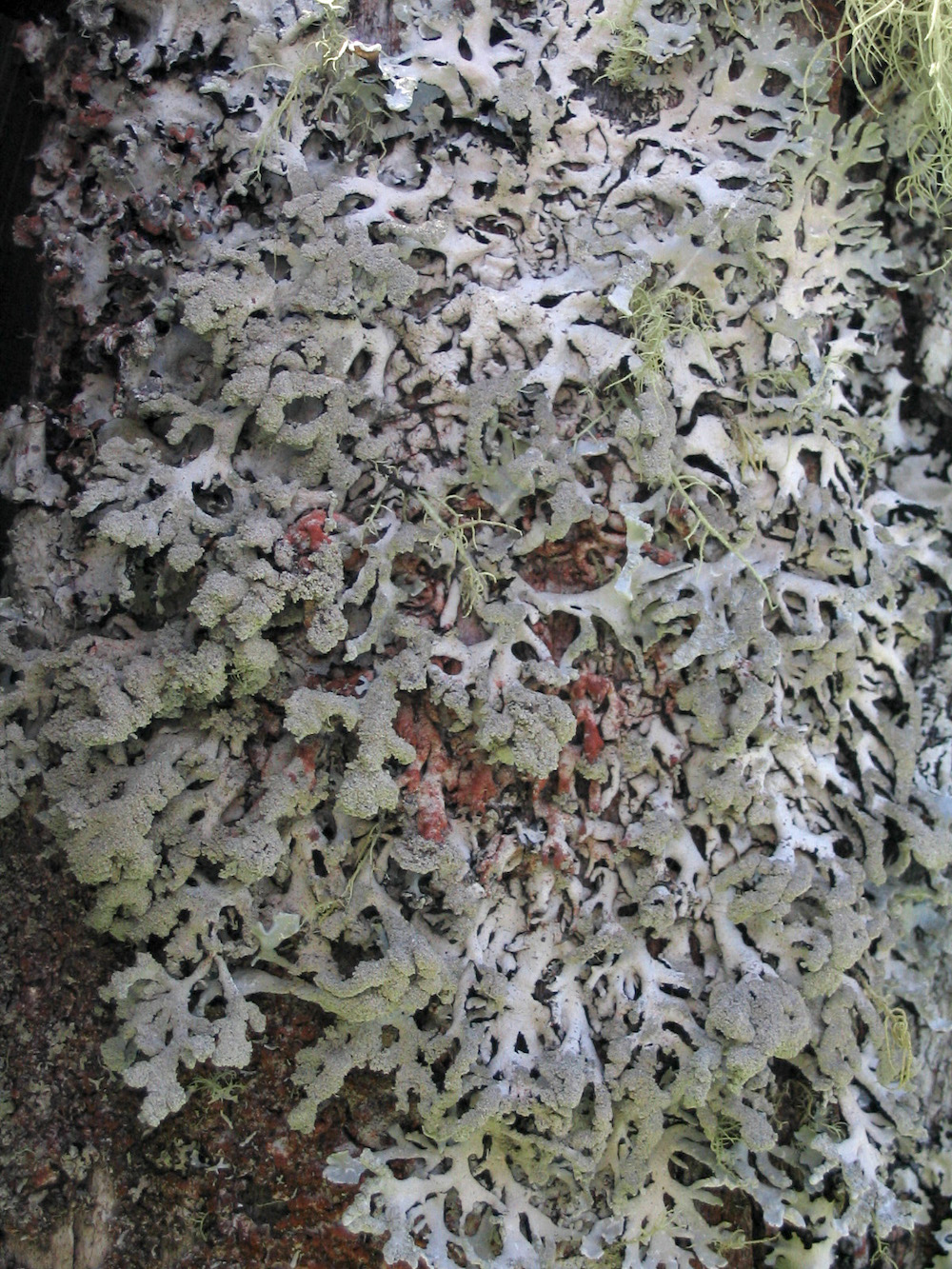
Habit
|

